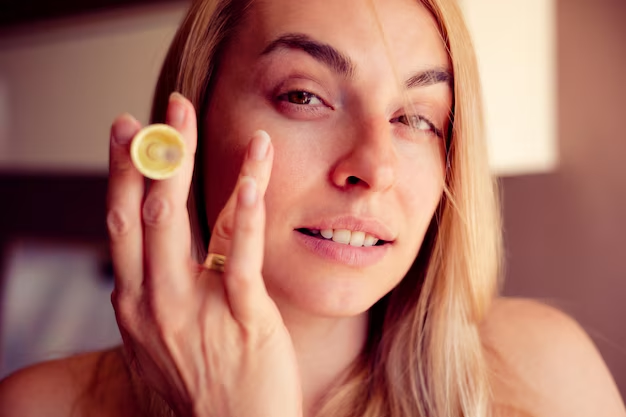Discovering the Best Prescription Creams for Rosacea: Everything You Need to Know
Rosacea affects millions worldwide, turning what should be effortless social interactions into self-conscious experiences. Characterized by facial redness, visible blood vessels, and sometimes acne-like lesions, managing rosacea can be an ongoing challenge. With a host of treatment options available, finding the best prescription cream for rosacea stands as a common quest for those seeking relief.
Understanding Rosacea
The journey towards managing rosacea begins with understanding what it is. Rosacea is a chronic skin condition often affecting the central part of the face. While its exact cause is unclear, factors like genetics, immune system factors, and environmental influences play a role. Unlike acne, which is common in teenagers, rosacea frequently affects adults over 30. Key triggers that can exacerbate the condition include hot beverages, spicy foods, stress, and temperature extremes.
Prescription Treatments: Why Creams?
Prescription creams are among the frontline defenses against rosacea. They offer several advantages:
- Targeted Action: Creams can directly target affected areas.
- Minimized Side Effects: Topical applications are less likely to produce systemic side effects compared to oral medications.
- Ease of Use: Incorporating a cream into daily skincare routines is simple and straightforward.
Popular Prescription Creams for Rosacea
Finding the right prescription cream involves understanding the options and how they might fit into an individual's treatment plan. Here are some notable options:
1. Metronidazole
Commonly recognized under brand names like Metrogel and Noritate, metronidazole is an antibiotic known for its anti-inflammatory properties.
- How It Works: Reduces inflammation and bacterial count on the skin, effectively addressing rosacea symptoms.
- Usage: Typically applied once or twice daily.
- Efficacy: Studies often highlight metronidazole as a first-line treatment due to its effectiveness in reducing redness and lesions.
2. Azelaic Acid
Available as Finacea, this treatment harnesses the power of naturally occurring acids.
- How It Works: Azelaic acid works by reducing inflammation and normalizing skin cell turnover, helping to prevent clogged pores.
- Usage: Applied twice daily.
- Efficacy: Known for its ability to reduce lesions and diminish redness.
3. Ivermectin
Ivermectin cream, marketed as Soolantra, offers an innovative approach.
- How It Works: Targets skin mites (Demodex folliculorum) associated with rosacea and also reduces inflammation.
- Usage: Used once daily.
- Efficacy: Many patients report a significant decrease in flare-ups and redness.
4. Brimonidine
Known under the brand name Mirvaso, brimonidine is tailored specifically for redness.
- How It Works: As an alpha agonist, it constricts blood vessels to temporarily reduce redness.
- Usage: Typically applied once daily.
- Efficacy: Provides rapid improvement in redness but must be used consistently for ongoing benefits.
Factors to Consider When Choosing a Cream
While these treatments offer hope, selecting the best one demands consideration of individual circumstances. Factors include:
- Severity of Symptoms: More severe cases might require combination therapies.
- Skin Sensitivity: Patients with especially sensitive skin may prefer certain formulations.
- Lifestyle & Daily Routine: The complexity or simplicity of a skincare regime can influence adherence and success.
Complementing Creams with Other Treatments
While creams form the backbone of rosacea treatment, they can be complemented by other interventions:
- Oral Antibiotics: In cases where creams aren't sufficient, options like doxycycline can help reduce severe inflammation.
- Laser Therapy: For visible blood vessels or persistent redness, laser treatment might be recommended.
- Lifestyle Modifications: Avoiding triggers, such as extreme temperatures and spicy foods, plays a crucial role.
Building a Routine
Consistency is essential in managing rosacea. Here are general steps to integrate creams effectively:
- Cleanse: Use a gentle, fragrance-free cleanser.
- Apply Cream: Follow your dermatologist’s instructions regarding application frequency.
- Moisturize: Select a moisturizer suitable for sensitive skin.
- Sun Protection: Apply sunscreen daily as UV exposure can worsen symptoms.
Empowering Conversations with Dermatologists
An informed discussion with a dermatologist can greatly enhance treatment success. Questions to consider:
- How soon should I expect visible results?
- Are there side effects I should watch for?
- What changes should prompt a follow-up visit?
A Path Forward
Managing rosacea requires a proactive, multifaceted approach. By understanding the strengths and roles of various prescription creams, individuals can engage more constructively with healthcare providers, tailoring their treatment journey to their specific needs.
Quick Reference Guide: Managing Rosacea 🌟
Key Prescription Creams:
- Metronidazole (Metrogel, Noritate): Anti-inflammatory, reduces redness.
- Azelaic Acid (Finacea): Clears pores, combats lesions.
- Ivermectin (Soolantra): Targets mites, reduces inflammation.
- Brimonidine (Mirvaso): Reduces redness through vasoconstriction.
Factors to Consider:
- Severity of symptoms.
- Skin sensitivity.
- Lifestyle compatibility.
Complementary Treatments:
- Oral antibiotics.
- Laser therapy.
- Lifestyle adjustments (avoid triggers).
Integration Tips:
- Consistent cleansing and moisturizing.
- Daily sunscreen application.
Proactive Questions for Dermatologists:
- Result timelines.
- Side effects.
- Follow-up requirements.
By grasping the nuances of available treatments and fostering open communication with healthcare professionals, those affected by rosacea can navigate their journey with confidence and clarity. 🌿✨
